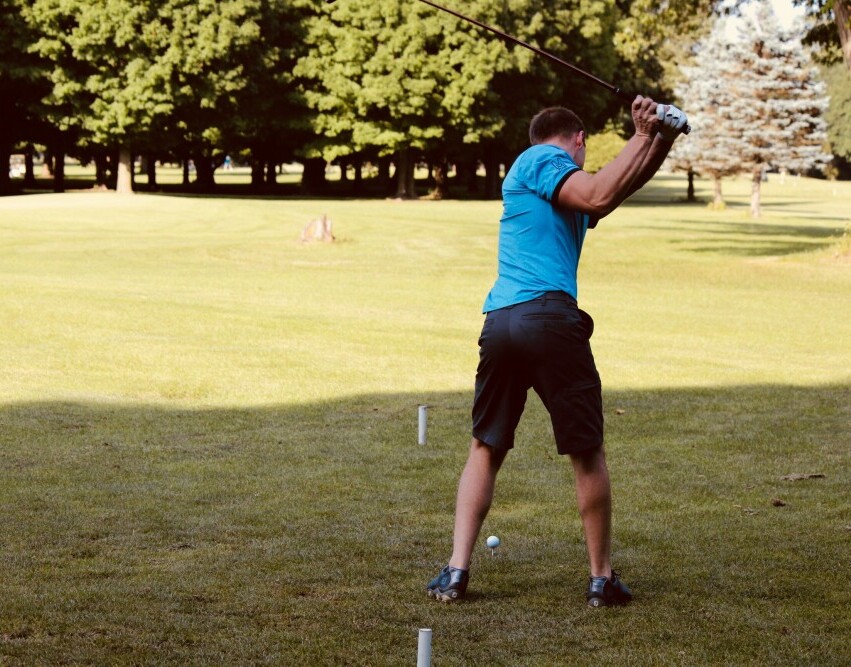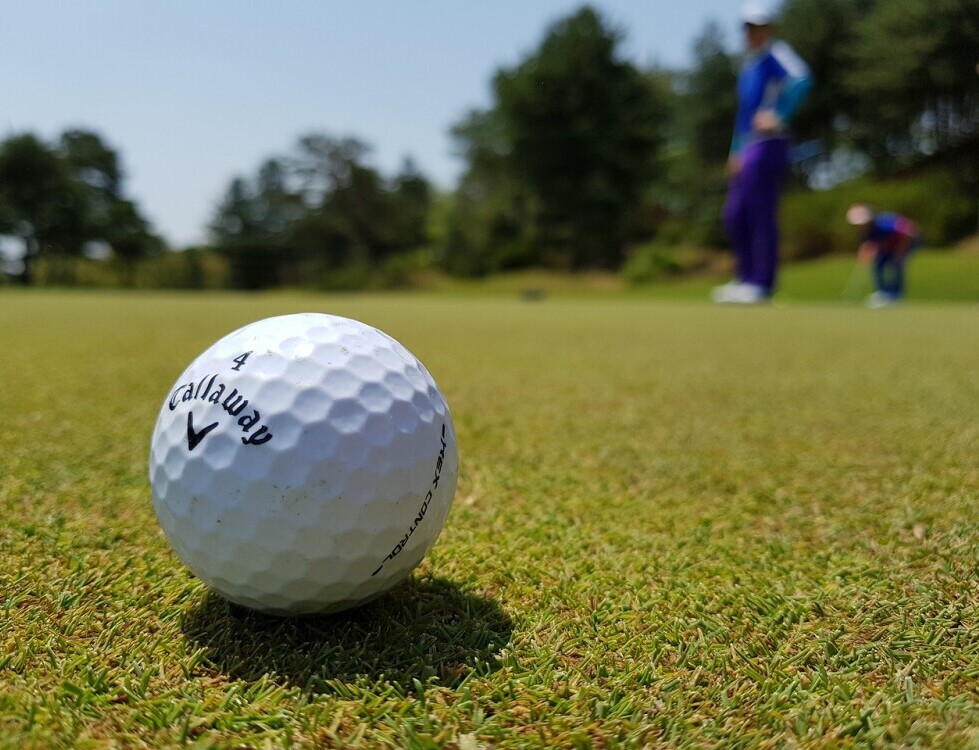Understanding Golf Ball Spin And Its Impact On Your Game


Fore! Quick note: a few links here are affiliate links. If you snag gear through them, I earn a small commission — no extra strokes added to your game.
Golf ball spin might seem like some secret sauce only pros know about, but it’s actually quite straightforward and super important for anyone who loves the game. Spin is all about what makes your golf ball fly and land the way it does. Come along with the golf viking as we dive into the magical world of ball spin.
There are a few main types you should know—backspin, sidespin, and less commonly, topspin. Each type can seriously change how your ball behaves. Think of backspin as what gives your ball that soar and stop, sidespin as the culprit behind those unexpected curves, and topspin (though rare in golf) as something that reduces ball lift.
Understanding spin is key for golfers, whether you’re just starting out or have been teeing off for years. It’s like having a sneak peek into the physics of your game. Why is it a game-changer? Well, the right spin can turn a simple shot into a hole closer to par and send your confidence soaring. Whether you’re on the fairway or stuck in the rough, knowing how to use spin can help you face any obstacle the course throws at you.
Stay tuned as we explore deeper into the world of golf ball spin. You’ll see that mastering it isn’t reserved for the pros and you’ll get some tips on how you too can wield spin to improve your game. From trial and error on the range to watching how balls react on the green, there’s no better tool for tweaking your game plan. So why is it so important, anyway?
If you’re looking to fine-tune your control on approach shots, our guide on the best golf clubs for backspin will show you exactly which clubs help maximize spin and stop the ball quickly on the green.

Why Spin is Crucial in Golf
Understanding why spin matters can give you that edge you’re looking for. Spin directly influences your golf ball’s trajectory—basically, the way it flies through the air. With the right spin, your ball can travel farther and land with more accuracy. Backspin can lift your ball higher for a gentle landing, while a lack of it might leave you short on distance. When you want to finesse your shots so that your ball lands on the perfect spot on the green, you will need to master the spin.
Control is another department where spin takes the win. Imagine having the power to make your ball stop right where you want it. That’s backspin in action. It’s your personal shot-stopping aid on the green. Alternatively, sidespin can be both friend and foe. When managed well, it helps shape shots around obstacles, but uncontrolled, it can veer your ball off course, resulting in slices or hooks.
By sharpening your spin skills, you’re essentially adding layers to your tactical playbook. You don’t just hit and hope. Instead, you plan and execute shots with precision, whether you’re facing the headwinds or battling a cross-breeze. If you can learn to spin the ball how you want, every shot becomes available to you.
So, why is mastering spin crucial? Because it transforms your approach to the game from reactive to strategic. You’ll find yourself thinking not only about where you want your ball to go but how you want it to get there. This insight not only boosts your confidence but also pumps up your overall enjoyment of the sport. Let’s get into how we can make this happen.
Improve your short game control by reading Short Game Mastery—it’s packed with tips for precise spin control.

The Mechanics of Golf Ball Spin
Spin isn’t just a magical phenomenon; it’s grounded in physics and can be mastered with understanding and practice. The creation of spin starts with the interaction between the clubface and the ball at impact. Simply put, it’s about how fast the ball revolves around its axis. The secret sauce? The friction and contact point as your club strikes the ball.
Several factors play into how much spin you can generate. First up is your swing speed. Faster swings generally mean more potential spin. But, it’s not just about swinging for the fences. The angle of attack—how steep or shallow your club is when it contacts the ball—also matters hugely. A steeper swing can increase backspin, while a level swing might produce less. So swing speed at the right angle can give you the spin you want.
The type of club you select significantly affects the spin too. Wedges, with their high loft and sharp grooves, are spin-generating machines. Those grooves? They grip the ball, especially in good conditions, giving backspin a dramatic lift. Meanwhile, the clubface plays a pivotal role in dictating whether you impart sidespin. Open or closed clubfaces at impact can make the ball curve more than planned.
Understanding these mechanics helps anticipate how your shots will behave. Grab a wedge next time you practice and notice how altering your swing and clubface angles impact spin. This trial and error helps in harnessing spin to benefit your unique play style. Like any craft, getting the hang of it pays off massively in refining your game.
Want to reduce slice spin? Check out our Ultimate Guide for How to Fix a Slice.

How Spin Affects Different Aspects of Your Game
Spin influences various parts of your game in ways you might not have fully appreciated. Think about driving accuracy first. Backspin helps your shots stay airborne longer and land more softly, which is critical when you need the ball to stick to the fairway or green. Too much backspin, though, can steal from your driving distance, slowing down rollout after it lands.
Then there’s sidespin, the usual suspect for unwanted curves in your shot, like hooks and slices. The more sidespin, the more your ball can deflect left or right. While this can lead to frustrating misses, understanding and controlling it allows skilled players to shape shots around hazards or doglegs strategically. So if used correctly it can help you maneuver your way through the course smoothly.
On the putting green, things get even more nuanced. Backspin and forward roll work together when you putt. The goal is to enhance forward roll to keep your ball on a straight path, reducing deviations caused by spin. Reading the greens becomes just as important as understanding your spin, merging skill with science.
Grasping how spin works across different shots and clubs bolsters your confidence to handle varied situations. Next time you’re on the course, pay attention to how changing your spin can adapt your game to different challenges. That knowledge can be your secret weapon when the stakes are high, and precision is key.
See how putter face design impacts ball roll in our Most Accurate Golf Putters list.

Practical Spin Techniques and Examples
Mastering spin isn’t just theory; it’s about getting out there and practicing the right techniques. Begin with small goals like adding backspin to your wedge shots. A simple trick? Focus on striking the ball first, then the ground, for that crisp contact and instant lift. It will take practice and repetition to get this down, so don’t expect to nail the ball spin right away.
Let’s look at some real-world spin moves that pros use. Picture yourself facing a tricky bunker shot. A pro might choose a high-loft wedge, open the clubface, and swing calmly, generating enough backspin to pop the ball up and land it softly on the green. You can try these techniques during practice rounds to see how they fit your style.
When it comes to sidespin or shaping shots, think strategically. Aim to create a slight fade or draw, adjusting your stance and swing path for controlled sidespin. Imagine skillfully navigating around obstacles like trees or water. It’s not about smashing each shot; it’s about precision and knowing your equipment capabilities.
Experimenting with spin proves beneficial across various weather conditions too. In windy situations, lower ball flight with spin control can slice through gusts, offering greater accuracy. So as a successful golfer you will need to not only have a good swing but also judge your environments and situations wisely. The ball spin can be a true help to your game if you know how to use it appropriately on the course.
Integrate spin-focused drills into your routine. Practice on the range or short game areas, focusing on what works for you. With consistent effort, you’ll gradually incorporate spin into your strategic toolkit, enhancing both your enjoyment and performance everywhere you go. I’ll see you out on the course, spinning that ball like a hero.
Understand loft, grooves, and technique in our Best Pitching Wedges for Beginners resource.


